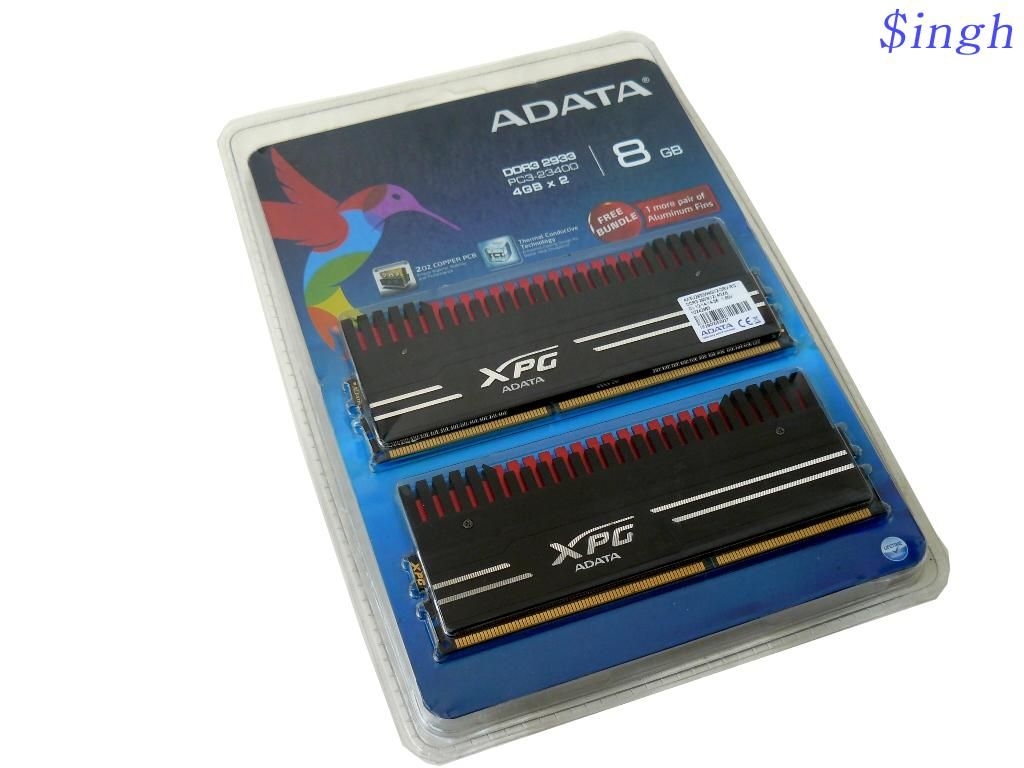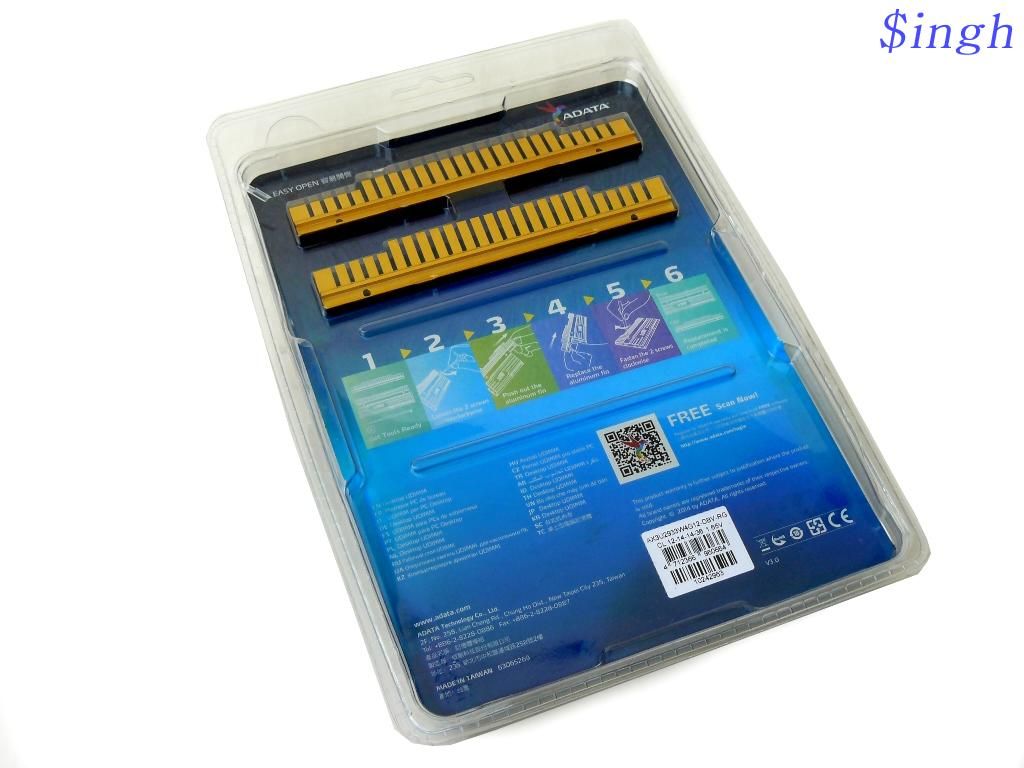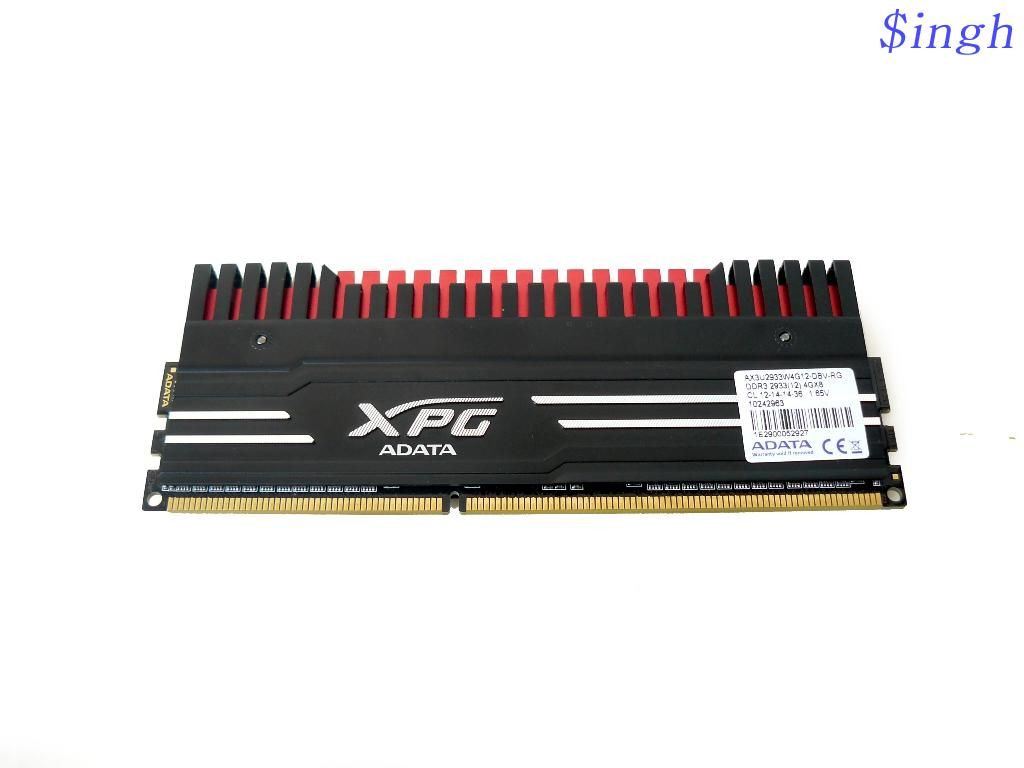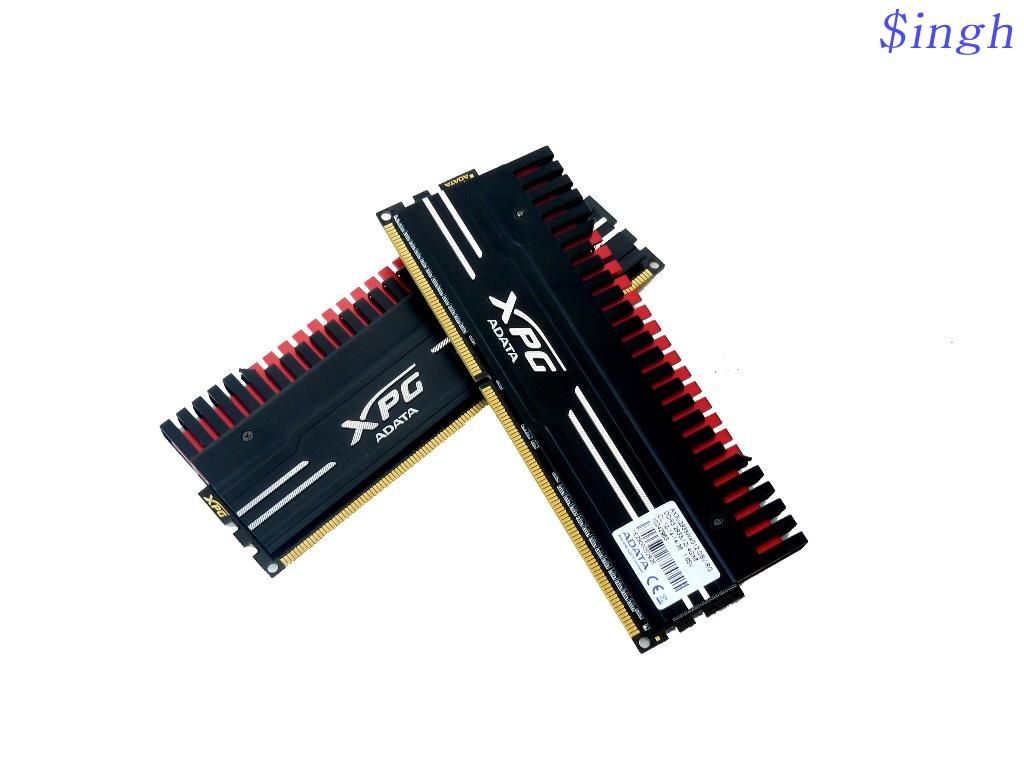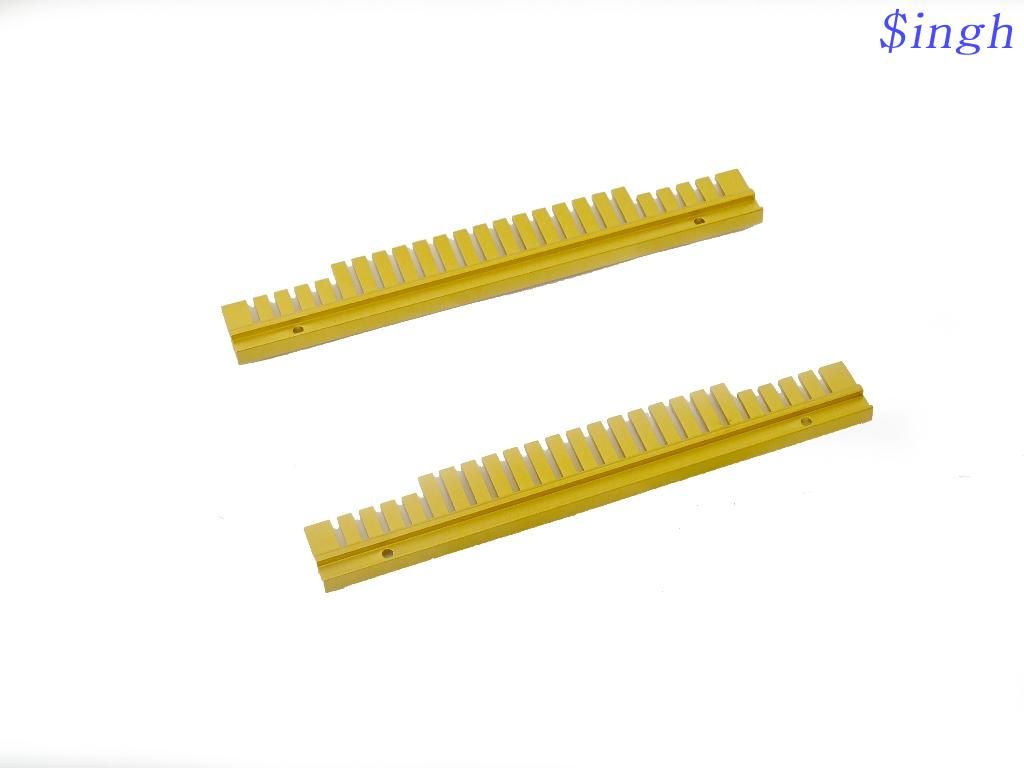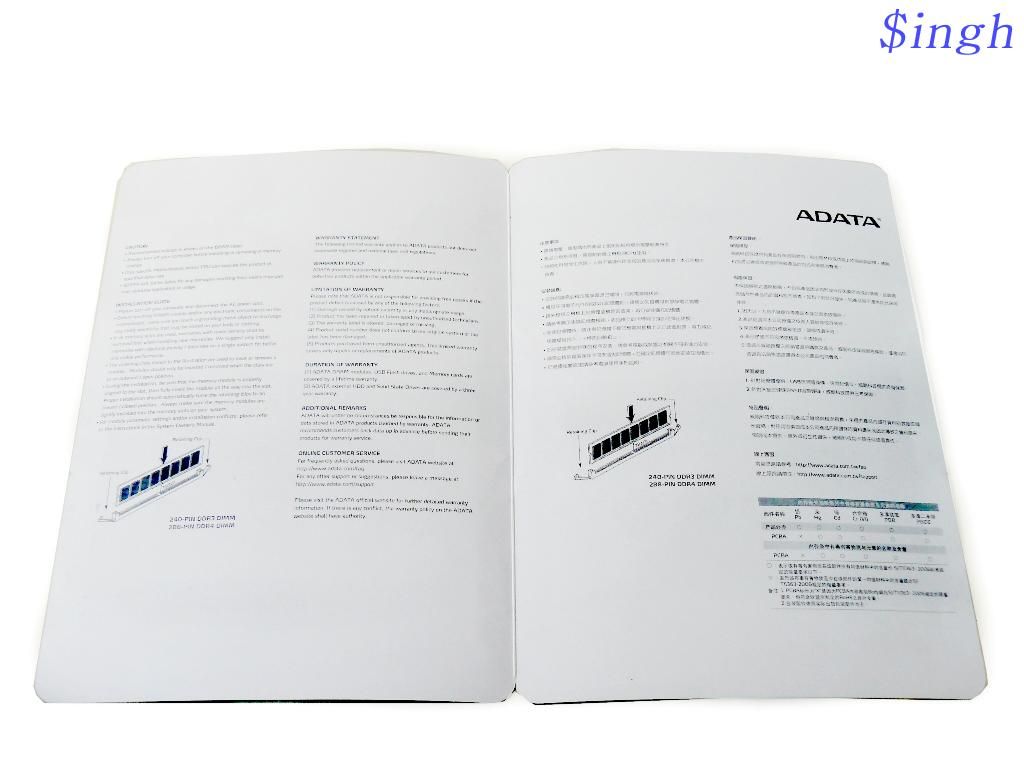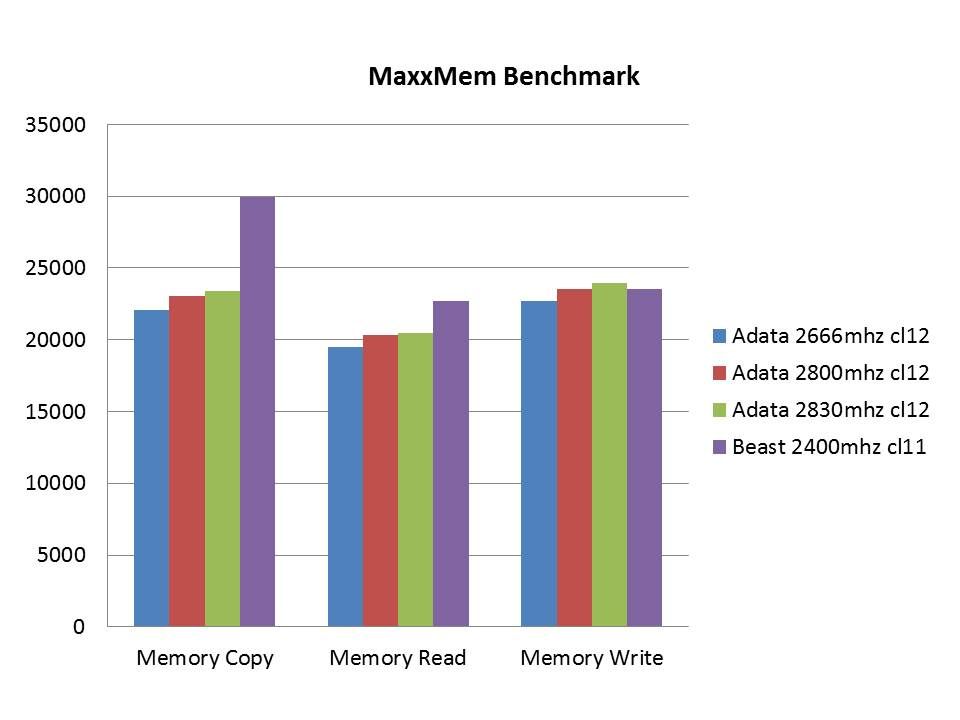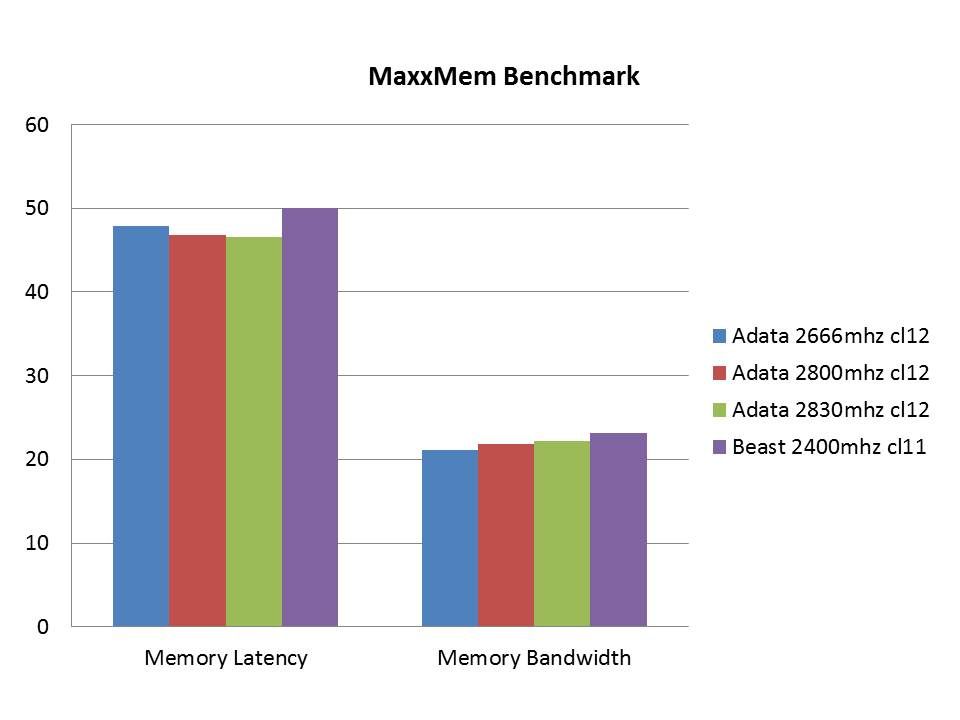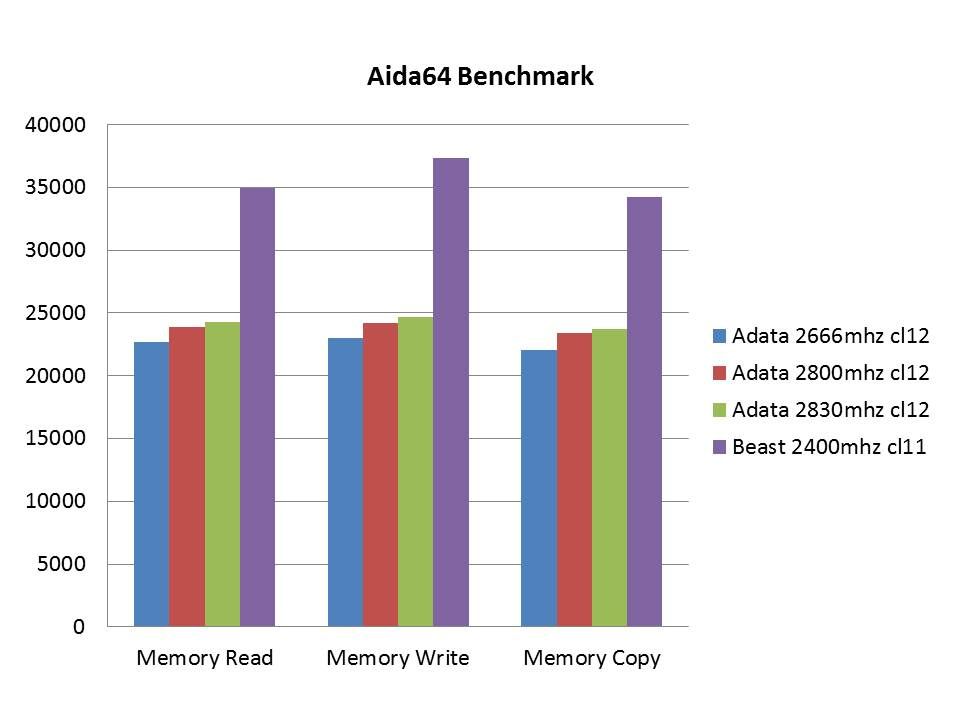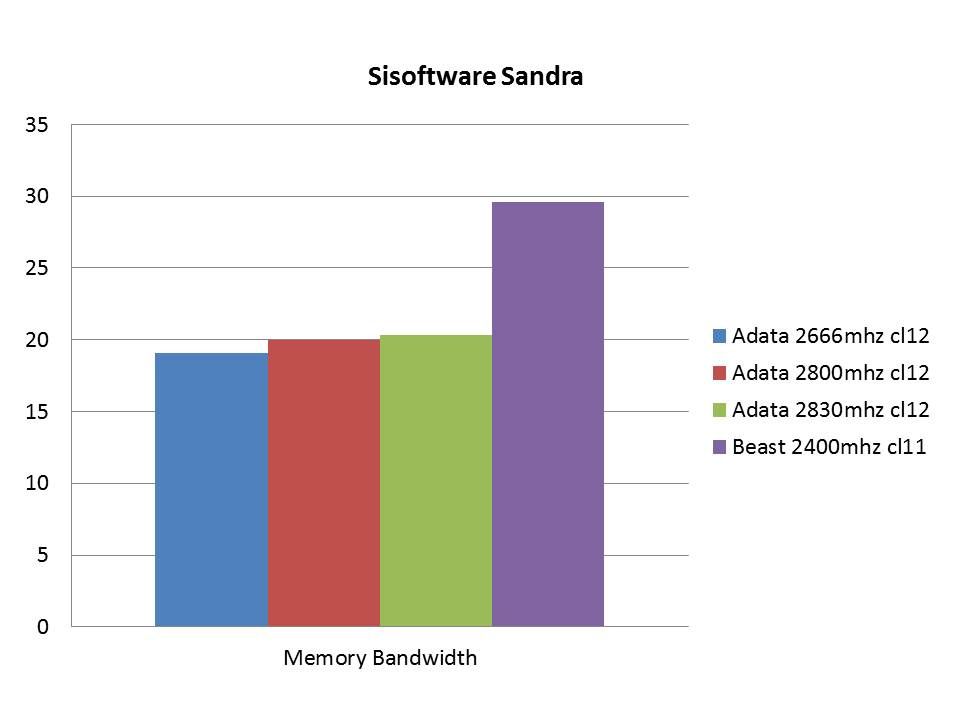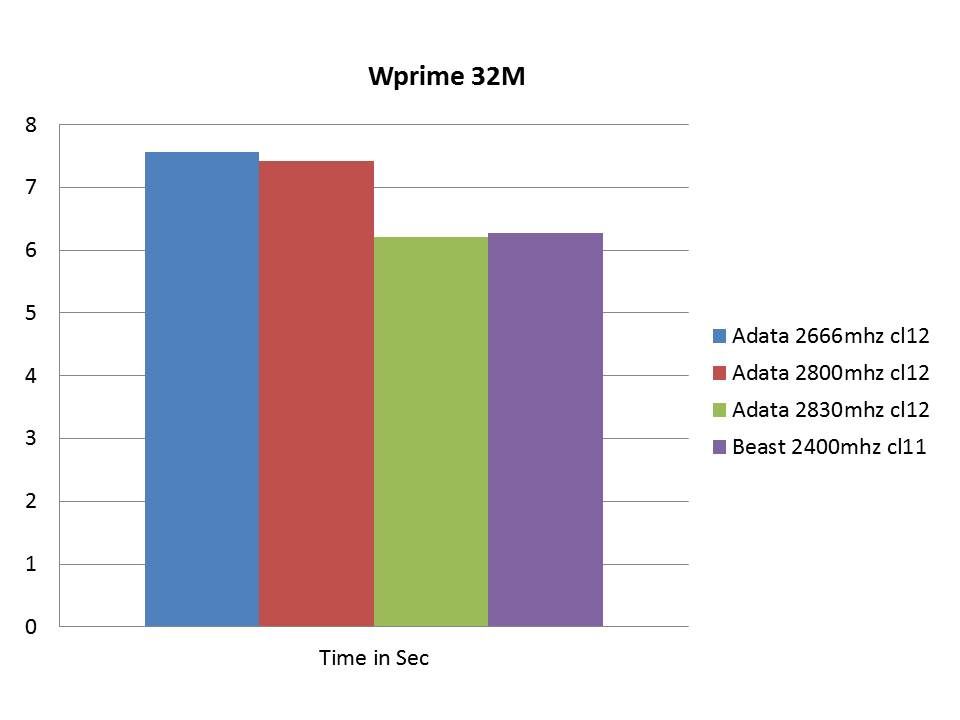Here, not too long before the launch of the new DDR4 RAM, ADATA has joined the fray with some really delicious DDR3 RAM with a clock frequency of no less than 2933 MHz, as we all today must have looked at. ADATA XPG V3 2933 MHz are on the high profile with interchangeable Heatsinks. Some quick specs are mentioned below.
Specifications
· High profile
· Clock frequency of 2933 MHz
· Dual Channel
· Voltage at 1.65V
· Clock Latency of 12-14-14-36
· Replaceable heatsink (Red and Gold)
· Lifetime warranty
Preview
Description
Start with inputs and extraction of this fatty DDR3 RAM. The wrapper is a standard plastic wrapping, but as we saw many times before experienced to sit and curse a sealed plastic wrapping, which is impossible to open, while scissors are all gone, the ADATA made an Easy-Open function where the back is just too open. In addition, the package very ADATA standardized with a blue background and their logo with a hummingbird. The kit, which we received for testing today, is an 8 GB set consisting of 2x 4GB modules.
In the package we find the two RAM modules with red Heatsinks mounted. The modules are quite heavy to stand in the hand, and they seem generally to be a crazy stable quality with a truly massive heatsink that can move a lot of heat. Not least because they protrude so far into the air. However, where you have to be aware that there may be problems with any CPU cooler.
Down along the side on both sides of the black heatsink runs two aluminum strips, and that's as both an ADATA XPG and a logo in the same color as you can see.
Excellent heat dissipation guaranteed by means of high-quality DRAM modules and a double thick layer of metal on Heatsinks that have direct contact with DRAM modules. Furthermore, the PCB consists of no less than eight layers, so there is really put in the oven for some truly stable RAM.
On one side of the heatsink we find two small screws. These are the screws that should be off if the colored portion of the heat sink needs to be replaced. With the two screws taken out, heatsink can easily slide out on both sides, after which you then can insert the yellow (d) colored heatsink from the package and tighten the screws. This gives you all the opportunity to have either red or yellow Heatsinks on your RAM, whichever theme you may have some of his build.
Now coming back to the point lets see how it performs in benchmarks and in everyday use.
Test Setup
With inputs and unpacking successfully accomplished, we can now begin to look a little on my test system and the applications that will be used for benchmarking modules.
- Intel Core i7-4770K @ 4.1GHz
- ECS Z97 Machine
- Corsair Force SSD 60GB
- Gigabyte Hd7970
- Seasonic 1000w Platinum
- ADATA XPG V3 2933 MHz DDR3
For comparison,
- Kingston Hyperx Beast 16gb 2400mhz
Unfortunately, due to my bad chip controller ram modules are not booting up @stock clocks of 2933Mhz and max stable clock obtained is 2860mhz in dual channel configuration.
All tests are made with the given clock frequencies of 2860mhz, 2800mhz, 2666mhz and the DRAM Voltage@1.65v with timing 0f 12-14-14-36-2t set in the BIOS.
MaxxMem Benchmark
Aida64 Benchmark
Sisoftware Sandra Bandwidth
Wprime 32M
Super Pi 1M
Overall, the two types of RAM are very similar. Since CL is somewhat higher in ADATA- than it is at Kingston modules there is a discrepancy here. But one thing is certain ADATA XPG V3 2933 MHz DDR3 modules are some seriously fast RAM that can handle most tasks very quickly that we can find to throw at them.
Conclusion
Now coming to final thoughts of these delicious DDR3 modules from ADATA, and it is as always therefore been time to gather all my thoughts in an overall conclusion. I will therefore immediately embark on.
The wrapping was so much enterprise segmented, when you consider the minimal plastic form, they came in, with a happily Easy-Open solution on the back. So, minimal packaging and not a lot of extra, and often actually pretty indifferent, frills.
The build quality is steeped in maximum quality. The modules weighted really well spent extra metal for the manufacture of Heatsinks, DRAM modules have direct contact with the Heatsinks. ADATA has just made a PCB consisting of no less than eight layers. They are suitable probably best in machines to be used for heavy editing or rendering work with the massive bandwidth they are for the day.
The performance of Adata Ram kits is good. However, modules use 1.65V as opposed to the more common 1.5V modules, we usually see. The only thing I could perhaps have liked to see was a lower CL (Clock Latency).
The design is really cool and I absolutely love the exchangeable Heatsinks. Which furthermore also was extremely easy to replace. Overall some extremely delicious DDR3 modules with good performance, which I could recommend. Not just because they deliver some good results, but also because they will look exceptionally good in a show build.
Good:
Cool design
Interchangeable Heatsinks
Good performance
2933 MHz clock frequency
Direct contact between the heatsink and DRAM modules
Bad:
Clock Latency is little high
High voltage
Specially Thanks to ADATA for providing the sample.
Specially Thanks to ADATA for providing the sample.

